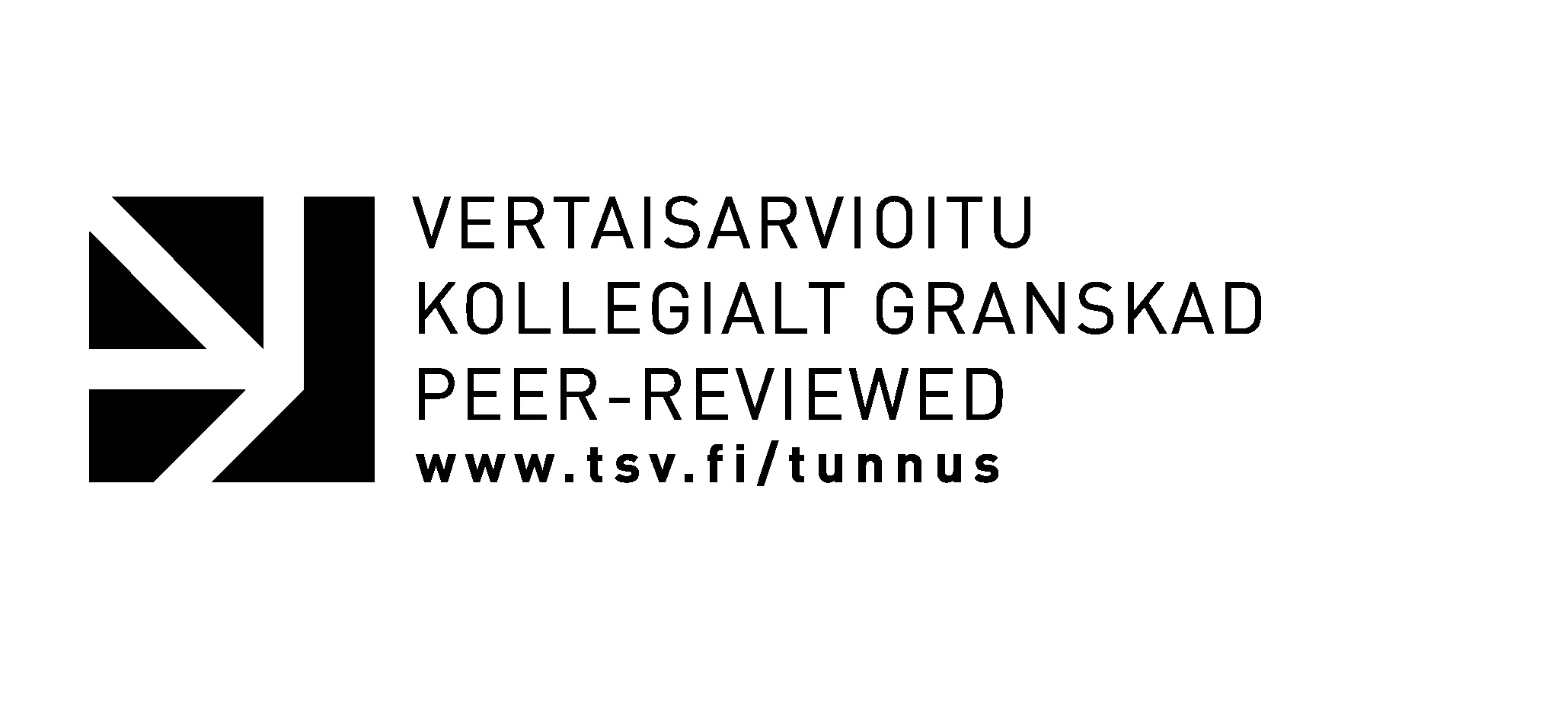Jumalansynnyttäjä ristin juurella: patristiikan ja ikoniteologian rajankäyntiä
Avainsanat:
Jumalansynnyttäjä, risti, ikoni, Bysantti, ekfrasis, patristiikka, Golgata, tulkinta, hymnografiaAbstrakti
Maria ristin juurella on teema, joka tarjoaa havainnollisen esimerkin patristisen kirjallisuuden ja ikonien välisistä suhteista. Patristisessa teologiassa kyseessä on hahmo, jonka sisäinen tila on syvän menetyksen tuskan ja orastavan ylösnousemustoivon välisessä jännitteessä. Inkarnaation idean läsnäoloa Golgata-tapahtumassa korostetaan teksteissä eri tavoin. Lisäksi idän isien teksteissä Maria on paikalla pelastettavana muun ihmiskunnan tavoin.
Klassisissa Golgata-ikoneissa, kuten venäläisen Dionisin työssä, on nähtävänä harmoninen, kokonaisena avautuva esitys samasta teemasta. Kirkkoisien näköalojen avulla kuvan sisältö, vaikutukset ja päämäärät asettuvat laajempaan yhteyteen ja saavat selkeitä suuntaviivoja. Tekstin avaamat sisällöt ikään kuin täyttävät sitä merkitystilaa, jonka ikoni avaa visuaalisesti.
Bysanttilainen ekfrasis ja modernit ikonien kuvakielen kuvailut täydentävät kokonaisuutta tarjoamalla siltoja kuvasta tekstiin ja tekstistä kuvaan. Romanos Melodoksen hymnografia on oleellinen osa tätä kokonaisuutta; reseptiohistorialtaan sen merkitys on valtaisa.
Ilman patrististen ja liturgisten tekstien ajatusmaailmaa ikonin kuvaileminen ja tulkitseminen jää pinnalliseksi tai ajautuu irralliseen subjektivismiin. Toisaalta kuva auttaa oleellisesti tekstien ymmärtämistä. Ikoni luo kokonaisvaltaisia harmonisia visioita, jotka antavat itsensä kokonaisena. Kuva ja sana täydentävät toisiaan ja syventävät toistensa ymmärtämistä. Siksi ikonimaalarien olisi välttämätöntä perehtyä kirkkoisien teologiaan – ja teologien ikoneihin.



